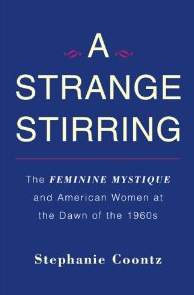Podcast: Play in new window | Download
Updates:
- Justice Clarence Thomas’ Strange Silence
- Justice Clarence Thomas Amends 1997-2009 Financial Forms
- Wisconsin Anti-Union Plan Spark Huge Demonstrations
Mass Deception: Moral Panic and the U.S War on Iraq – Dr. Scott Bonn
The attacks of 9/11 led to a war on Iraq, although there was neither tangible evidence that the nation’s leader, Saddam Hussein, was linked to Osama bin Laden nor proof of weapons of mass destruction. How then was propaganda and distortion used to garner support for the invasion of Iraq? Dr. Scott Bonn has a few theories, in his new book, Mass Deception: Moral Panic and US War on Iraq. Bonn introduces a unique, integrated and interdisciplinary theory called “critical communication.” We talk more with Scott A. Bonn, assistant professor of sociology at Drew University. Dr Bonn teaches courses in criminology, deviance and research methods.
- Moral Panic: a criminological concept established by Stan Cohen. An exaggerated public response and policy initiative, the media go along for the ride.
- The crux of it is that the people become almost dependent on the elites.
- I was listening to the war drums pounding in 2001, 2002 and early 2003. “Timing is everything, from a marketing view you don’t introduce new products over the summer.” – President Bush, White House Chief of Staff
- Terminology entered the public airwaves, mad men, mad dog, evil doers, tied to imagery of 9/11.
- I looked at the rhetoric of the Bush Administration, and then I looked at public opinion polls. Public opinion mirrored the rhetoric.
- “Critical communication” has its foundation in Chomsky’s notion of manufacturing consent, and looking at the research of during the dawn of the Nazi party.
- In the modern world, oppression can seem subtle, attractive and entertaining. Music, film and poetry actually can be forms of oppression if there are lies being disseminated.
- Part of my book is that we don’t get fooled again. Let’s be critical consumers.
- Let’s not drink the tainted kool-aid of hatred and fear without questioning what the motives of the server are.
- 90 percent of the world’s media outlets are controlled by six conglomerates.
- There’s ample evidence that “they” knew there were no stockpiles of mass destruction.
- I worked in advertising, I worked at NBC, I was actually vice president at NBC. It was exactly that experience that gave me a first hand view of exactly how news is created. It’s only news because some who has the power decides that it is.
- As a society were not critical, scrutinizing and intellectual. There’s a tendency to passively accept what we’re told. Axis of Evil was reducing something that was highly complex, making it a lie.
- The next time we’re told we must respond to an iminent threat and we must act on it, we must ask why?
- Is there any objective indication that there is a threat?
Guest – Dr. Scott Bonn, Assistant Professor of Sociology at Drew University in Madison, New Jersey. He combines the knowledge and skills of an academic scholar with more than twenty years of senior-level corporate experience as an advertising and media executive. Bonn has developed a unique, integrated, and interdisciplinary theory called “critical communication” to explain how and why political elites and the news media periodically create public panics that benefit both parties. Facebook link
—
A Strange Stirring: The Feminine Mystique and American Women at the Dawn of the l960s
A Strange Stirring: The Feminine Mystique and American Women at the Dawn of the l960s” is the title of Stephanie Coontz’s new book. It’s based on postwar gender roles and nearly 200 interviews with women and men who read Betty Friendan’s The Feminine Mystique in 1963. The Feminine Mystique is a passionate account of “the problem with no name” the malaise, emptiness and frustration afflicting white middle class wives and mothers in a time of post war abundance.
- There were so many myths of who Betty Friedan was and she contributed to it herself.
- Daniel Horowitz did a book her own political history. She was a star psychology student at Smith.
- She has already developed her critique of Freudiasim which was so prevalent those days.
- She didn’t invent the “feminine mystique.” Physicians had a name for it, the housewives syndrome.
- You have been denied access of any sort of meaning in your own life.
- The Feminine Mystique sold 3 million copies.
- I have 188 interviews with men and women who read the book. I had to winnow it down to 188 because I kept getting calls and emails from people who swore that they read the book.
- When you went to college in the 1920s you were already defined in your role as a woman.
- What’s wrong with me that I don’t feel more grateful for my priviledges?
- Telling yourself that you don’t have the right to be unhappy, doesn’t solve it, it turns it in to that kind of depression. Incredible discrimination against working women. You could get fired if you got married, turned 30 or were in the airline industry.
- Stay at home housewives didn’t have rights either, there were only 8 states that recognized a wife’s interest in the property or earnings that her husband accumulated.
- One of the big triumphs of feminism is that much of Friedan’s book is so dated.
- Today, young women in their twenties in metropolitan areas out earn men because they have more education.
- Young men as you know are falling behind. Cross cutting currents of inequality that are much more complex.
- The women that are having the most difficult time are the women that would prefer to be homemakers but have had to take a low quality job and whose husbands do not help out at home.
- The happiest women are the ones that prefer to work, have a high quality job and a husband that helps out at home.
- There are things in Betty Friedan’s book I find repellent. I find her failure to deal with her own elitism very disconcerting, but she is not a me-first individualist.
Guest – Stephanie Coontz, teaches history and family studies at The Evergreen State College in Olympia, WA. She also serves as Co-Chair and Director of Public Education at the Council on Contemporary Families, a non-profit, nonpartisan association of family researchers and practitioners based at the University of Illinois at Chicago. Her work has been featured in many newspapers such as The New York Times, as well as scholarly journals such as Journal of Marriage and Family.
—————————————————–



